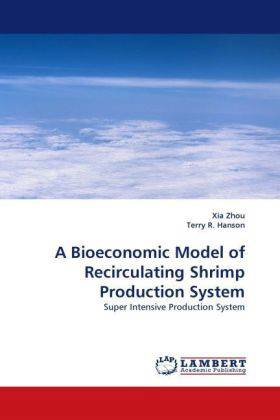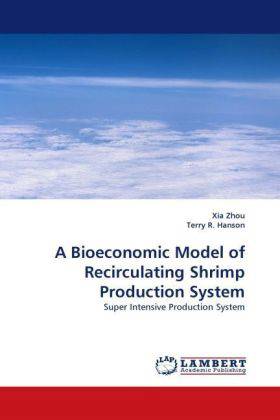
- Afhalen na 1 uur in een winkel met voorraad
- Gratis thuislevering in België vanaf € 30
- Ruim aanbod met 7 miljoen producten
- Afhalen na 1 uur in een winkel met voorraad
- Gratis thuislevering in België vanaf € 30
- Ruim aanbod met 7 miljoen producten
Zoeken
A Bioeconomic Model of Recirculating Shrimp Production System
Super Intensive Production System
Xia Zhou, Terry R Hanson
Paperback | Engels
€ 48,45
+ 96 punten
Omschrijving
To prevent disease outbreaks and increase competitiveness of U.S. shrimp products, U.S. aquaculture researchers have developed super-intensive, bio-secure, recirculating shrimp production systems since the early 1990s. The general objective of this research is to determine an optimal production strategy to maximize the net revenue for the system. An inventory optimization model was built to determine the optimal harvesting week, shrimp size, and number of crops per year for experimental trials conducted at Gulf Coast Research Laboratory, Waddell Maricultural Center, and Oceanic Institute. Survival rate and price sensitivity analyses were conducted to see their impact on the system's net revenue. The optimal harvesting week solved by this model is determined by shrimp growth and feed functions. Price and survival rate can affect the value of net revenue, but do not impact the optimal harvesting week. Shrimp producers can use the developed inventory optimization model and results to manage their operations.
Specificaties
Betrokkenen
- Auteur(s):
- Uitgeverij:
Inhoud
- Aantal bladzijden:
- 76
- Taal:
- Engels
Eigenschappen
- Productcode (EAN):
- 9783838345017
- Verschijningsdatum:
- 26/06/2010
- Uitvoering:
- Paperback
- Formaat:
- Trade paperback (VS)
- Afmetingen:
- 152 mm x 229 mm
- Gewicht:
- 122 g

Alleen bij Standaard Boekhandel
+ 96 punten op je klantenkaart van Standaard Boekhandel
Beoordelingen
We publiceren alleen reviews die voldoen aan de voorwaarden voor reviews. Bekijk onze voorwaarden voor reviews.











